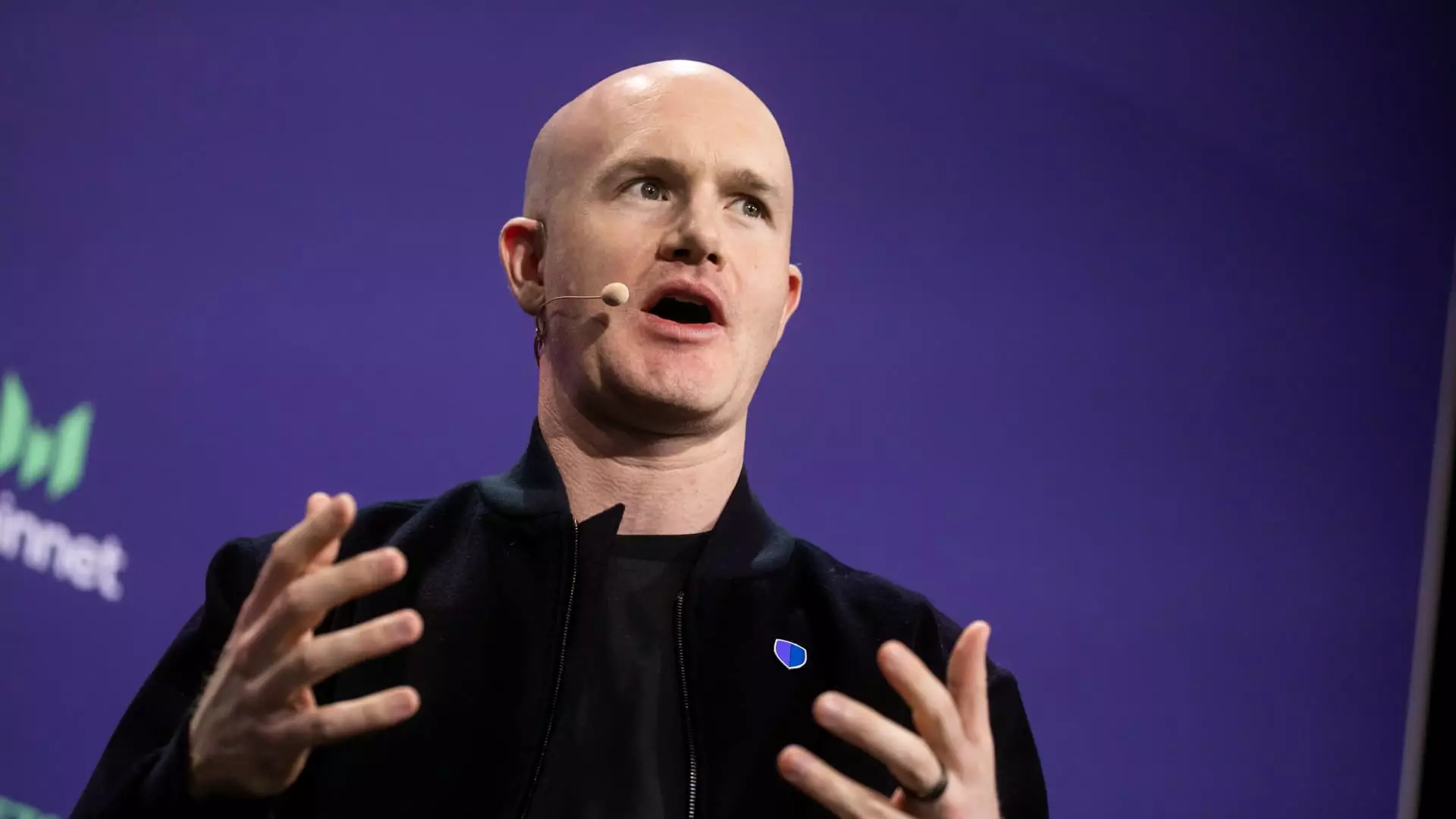In a groundbreaking revelation, Coinbase’s CEO, Brian Armstrong, has laid out a dynamic aspiration: to position Coinbase not merely as a cryptocurrency exchange but as a titan in the global financial ecosystem. This ambition signals not just a change in strategy but an inherent shift in how we perceive financial services going forward. Armstrong’s audacious claim— earmarking the next five to ten years for reaching the zenith of financial service apps—reflects a robust confidence in the transformative potential of cryptocurrency, which he asserts is fundamentally reshaping financial infrastructures.
What stands out in Armstrong’s vision is his resolute focus on the future. Rather than being mired in the conventional mechanisms of traditional finance, he propels a narrative where Coinbase is at the forefront of a crypto-driven revolution. His intent is not just to ride the wave of adoption; rather, he seeks to be the driving force behind it. This new pathway is critical as traditional banks and institutions, such as BlackRock and PayPal, begin exploring the treacherous yet promising waters of cryptocurrency.
The Catalyst for Change: Traditional Institutions Embrace Crypto
The recent transition of regulatory bodies like the Office of the Comptroller of the Currency (OCC) to embrace crypto assets has catalyzed a significant momentum shift. For years, the regulatory environment stifled innovation and growth by maintaining a cautious distance from digital currencies. However, Armstrong perceives a dramatic paradigm shift as institutions cautiously venture into crypto, with the intention of integrating it into their existing frameworks.
This evolving landscape bolsters Coinbase’s position. Traditional finance’s hesitancy to engage in cryptocurrency is fading, and with it, the previous constraints on institutional investment in the crypto space are being dismantled. Armstrong’s acknowledgment that major banks—through suitable regulatory frameworks—will eventually resonate with the technological revolution led by cryptocurrency echoes breadth of optimism. His assertion that every bank is “going to be integrating crypto at some point” reinforces a crucial point: the obsolescence of traditional banking without crypto integration could be imminent.
The Power of Stablecoins: An Expansive Revenue Stream
Coinbase is meticulously weaving itself into the fabric of the evolving digital finance landscape, particularly through stablecoins, which have strikingly emerged as a leading revenue driver. Throughout the first quarter, the revenue linked to stablecoins ascended by 50% year-over-year, demonstrating the burgeoning demand and acceptance of these digital assets.
Armstrong’s co-founding of the USDC stablecoin highlights Coinbase’s strategic positioning in this growing market. With a 50% revenue-sharing agreement with Circle and complete control over the interest garnered from USDC products on their platform, Coinbase is not only adapting but shaping how financial transactions occur in a digital age. Armstrong’s aspiration for USDC to dethrone Tether’s USDT as the leading stablecoin reflects not merely ambition but a calculated strategy to gain market dominance.
The Dangers of Fragmentation and the Need for Interoperability
Among the challenges Armstrong faces is the potential fragmentation that individual banks creating proprietary stablecoins could bring. Stablecoins thrive on network effects; their value is boosted through connectivity and interoperability across platforms. Armstrong’s caution against a myriad of isolated offerings is astute; the true potential lies in creating a cohesive ecosystem where resources and transactions flow effortlessly.
In advocating for a cooperative approach, Armstrong emphasizes the necessity of collaboration over competition—a much-needed reminder in a sector often characterized by disruptive maneuvers. Establishing partnerships with other financial institutions to utilize a unified stablecoin could lead to remarkable efficiencies—both in transactions and in the broader financial realm.
A Vision Underpinned by Innovation
Armstrong’s steadfast determination to ensure that Coinbase is not merely reactive to market trends but rather actively driving innovation speaks volumes about his leadership. He encapsulates a vision where traditional finance is not disregarded, but rather transformed through the lens of cryptocurrency. His analytical approach to developments within both cryptocurrency and broader financial ecosystems equips Coinbase with the agility necessary to navigate an uncertain and rapidly evolving landscape.
Ultimately, as Coinbase steadily times its march toward becoming a dominant player in financial services, its trajectory embodies a resounding affirmation of innovation over inertia. In a world increasingly open to digital transformation, Coinbase stands as a flagbearer of what’s possible—a dazzling ambition that promises to reshape not just the company but the very fabric of financial services itself.

